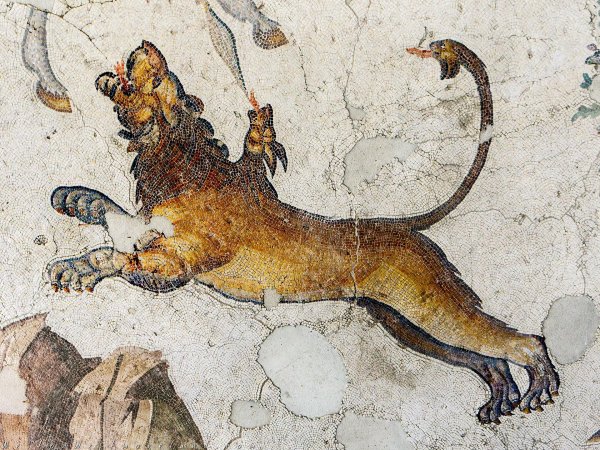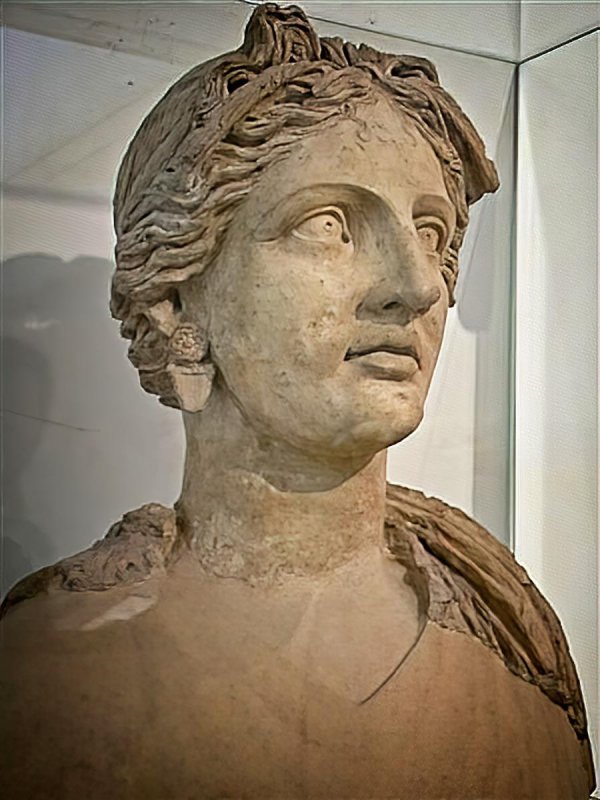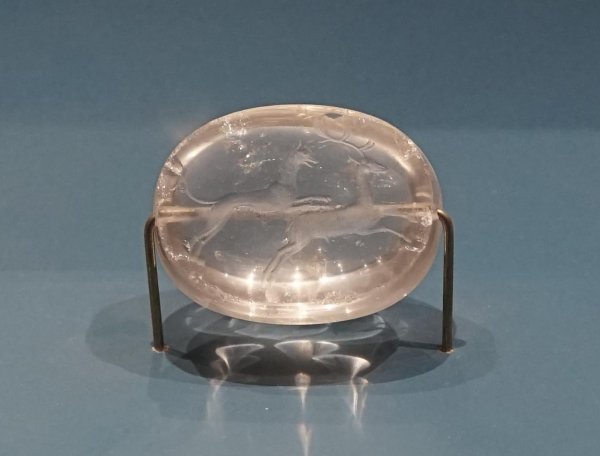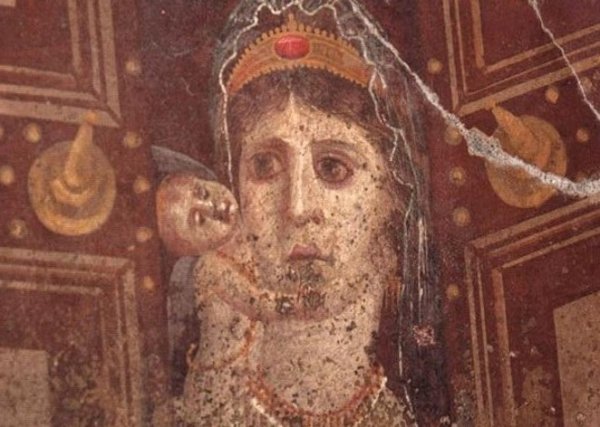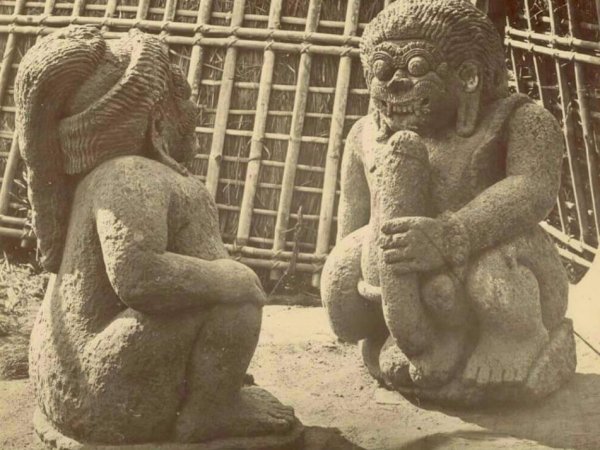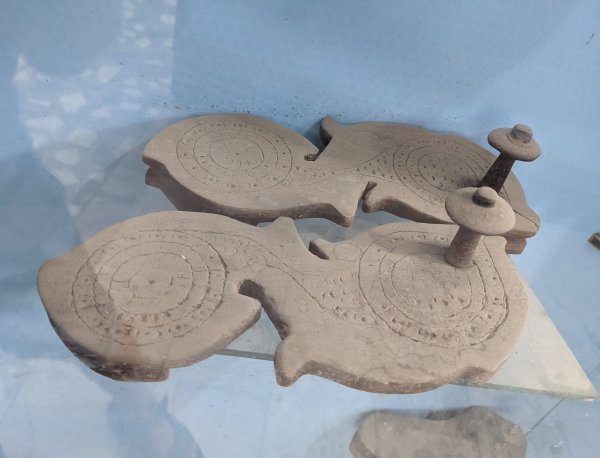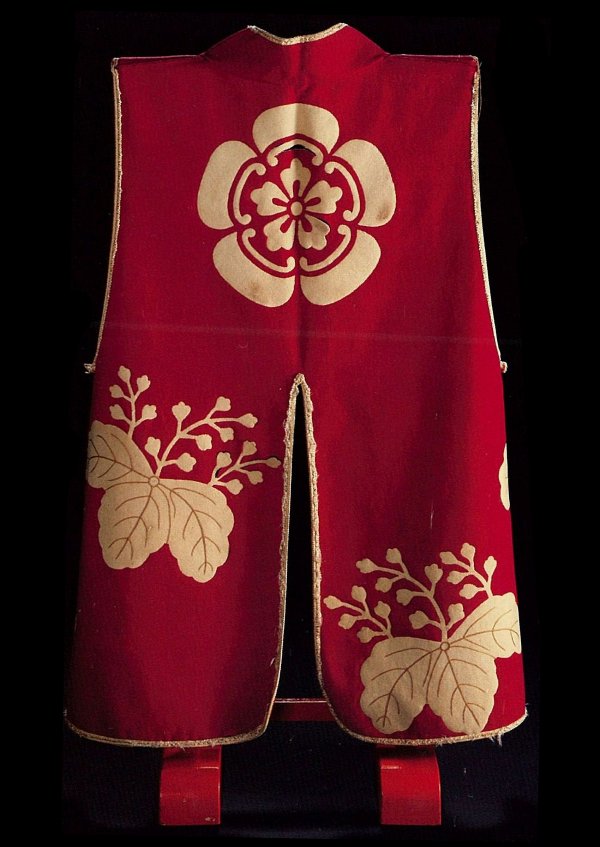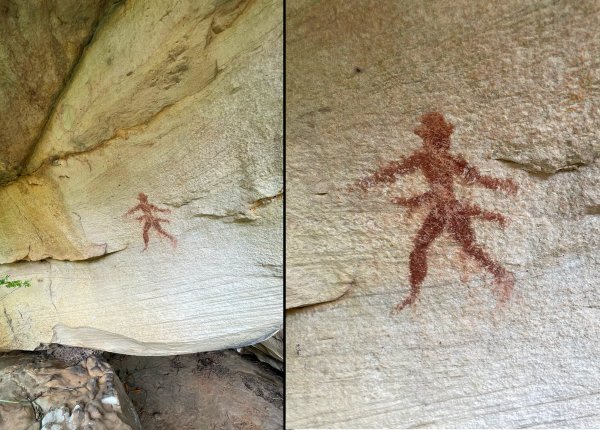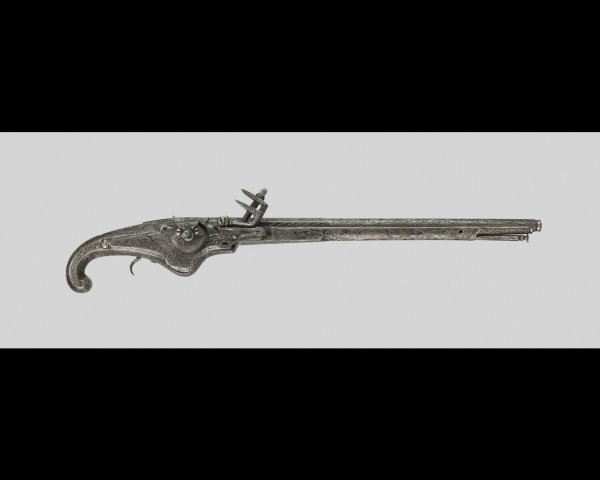Harvest cup in Casa Museo of Fondazione Paolo e Carolina Zani, circa 1844, concept - Francois-Désire Froment-Meurice, figures - Victor Geoffroy-Dechaume and Antoine Vechte, technique - gilded silver, agate, enamel, and pearls on a lapis lazuli pediment [970x1209]
What about it?
The Harvest Cup owes its name to the subject of its setting, evocative of grape vines and inebriation. The oval cup carved out of agate with precious yellow nuances is supported by a gilded silver stem in the form of a vine on which winged putti are playfully climbing, while the female figure reclining on the grip represents Reason put to sleep by wine. On the handle there are also a salamander and a bird's nest. The cup is mounted on an eight-sided lapis lazuli pediment with four silver feet in the shape of winged dragons. The base of the trefoil cup is decorated with cloisonné enamel and supports three figures representing Anacreon, Lot with one of his daughters, and Noah, allegories of poetic, erotic, and Dionysian inebriation.
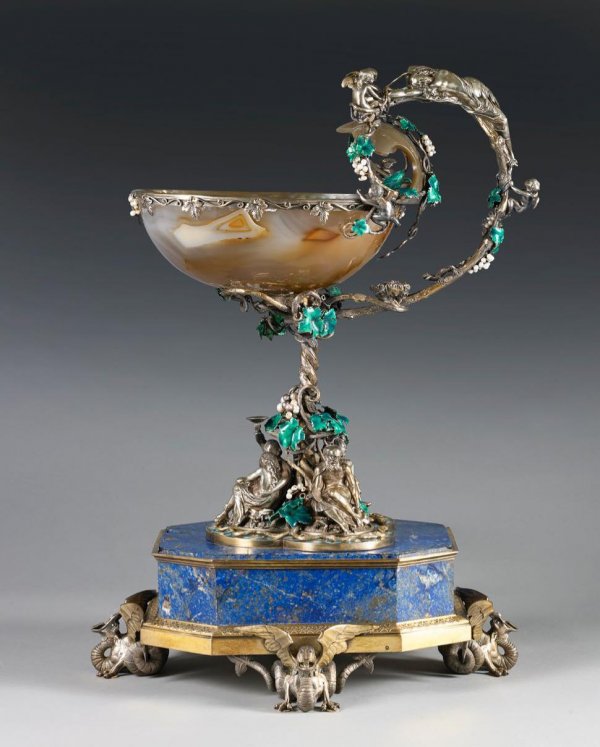
Roman mosaic of a Chimera (usually seen as a lion with a goat head on its back and a snake's head tail) from the floors of the peristyle court at the Great Palace of Constantinople, probably trod by Justinian I, builder of Hagia Sophia, which still remain at their original location [1920x1440][OC]
